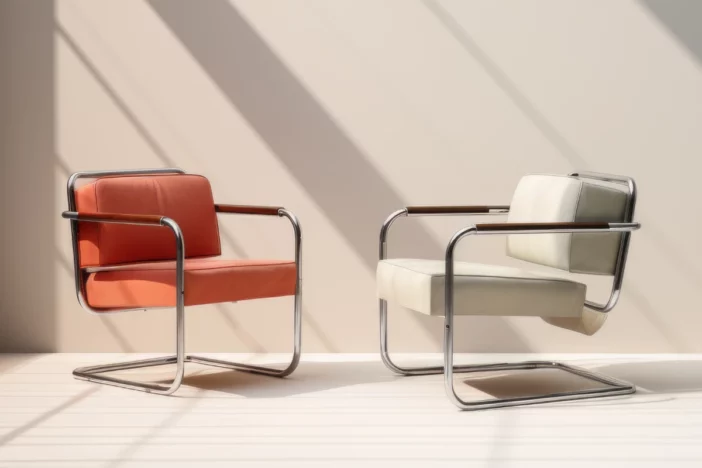
The second section of our in-depth glossary reviews styles that range from relaxed rural looks to formal sophisticated aesthetics.
Baroque
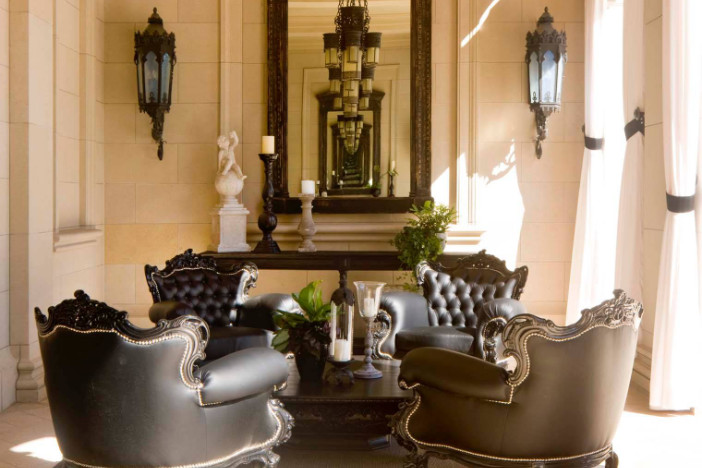
Baroque home design is associated with opulence, grandeur and luxury. Intricately designed furniture, gilded accessories and sleek materials such as marble and granite are characteristic of this European-influenced style. Architecture, decor and furniture are all symmetrical and depictions of shells and garland are frequently used throughout the home. Irregular curves, elaborate scrolls, oversized moldings and twisted columns can be found on pieces such as sofas, dining chairs, tables and cabinets to create a sense of motion. Decorative marriage chests called cassini also incorporated many of these organic details. Candles and lanterns are frequently used light fixtures with this home style. Iron lanterns line the walls of hallways and candles flicker on wood, brass and pewter stands.
Bauhaus
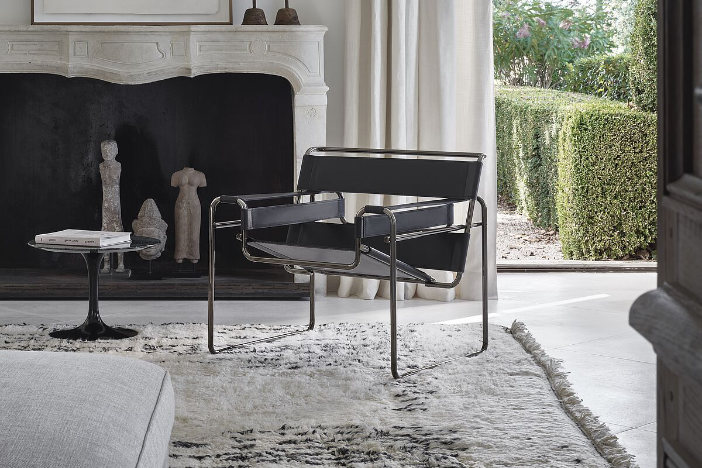
Much like modern design, the German-born Bauhaus style emphasizes simplicity evoked through clean, sharp lines. Functionality, a key element of this interior motif, was incorporated in concert with an appreciation of biological science. This ecological design unified art and science, with satisfying human needs as the focal point. For example, light fixtures are chosen based on their style and satisfaction of a room’s functional requirements (i.e. under-cabinet lighting for prep work in the kitchen). You’ll see many simple, built-in light fixtures to continue with the sleekness of a room.
Overall, Bauhaus furniture is incredibly flexible in its ability to adapt to the individual, their unique environment and needs. Many furnishings and lighting can be collapsed, folded or adjusted to the specialized requirements of each situation [Droste 2002]. Bauhaus designs are understated and feature smooth lines with a mix of organic materials such as leather, glass and laminated wood. Prominent Bauhaus designers include Walter Gropius, Marcel Breuer, Wilhelm Wagenfeld and Herbert Bayer.
Beach House
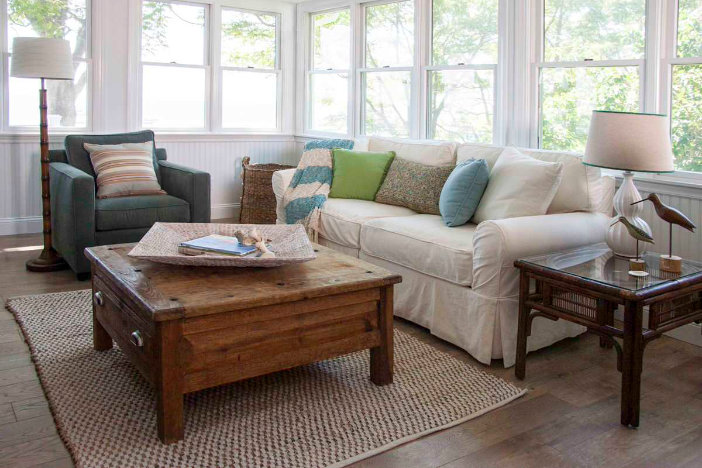
Beach House style evokes a light, airy feel, just like the vibe you would get while sitting with your toes buried in the sand. Color palettes are typically drawn from lively coastal hues found in nature, such as sky blue, beige and crisp white. Bright, sunny shades like coral and turquoise can also be incorporated to give the space personality. Natural materials such as weathered wood and sea glass are commonly found in beach decor. To maintain an airy ambiance, furniture is often made with wicker or distressed wood. Chairs and sofas are upholstered with lightweight materials such as cotton or linen. Light fixtures come with nautical flair – table lamps, for instance, might feature a repurposed buoy or some jute rope as their base. Rustic lanterns, made of copper or iron, may also be used as wall sconces.
Bohemian
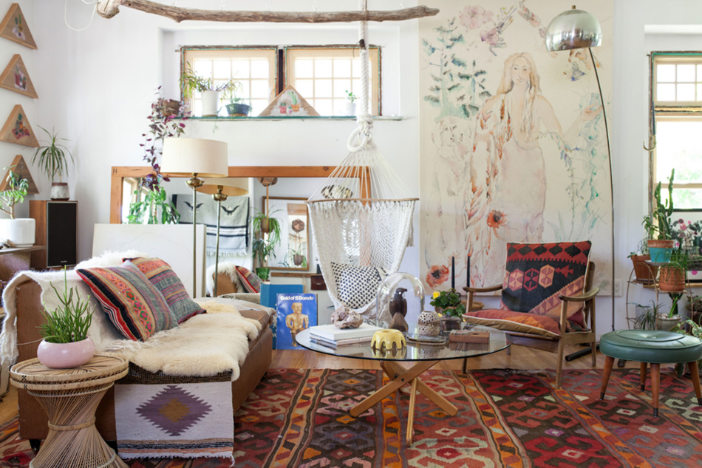
Bohemian-style homes have a laid-back atmosphere and emphasize nature, intricate patterns and bright colors like purples, reds and pinks. All of these elements are frequently combined to create an eclectic and unique aesthetic. The essence of the bohemian appeal is eclecticism. Boho chic is all about mixing interesting colors, trinkets, fabrics and various types of furniture without any intention of matching or adhering to a specific style, much like the nomadic vagabonds who inspired it.
You might see a contemporary couch featuring striped upholstery next to a vintage velvet ottoman and a bright-colored statement chair. Or retro floral window dressings with an Indian accent rug can create a sense of excitement in an otherwise standard living room. It’s the mix of different types of furniture that make Bohemian interiors so versatile. Light fixtures are just as unique as the furniture. Intricately detailed pendants, chandeliers dripping with crystals and table lamps complete with fringe are fixtures common for Bohemian homes.
Brazilian
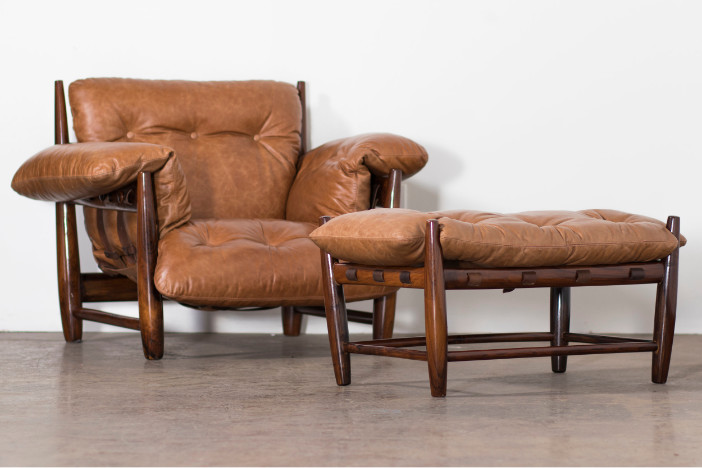
The most recognized Brazilian furniture design occurred during the 1900s. Unlike the cold structural formality of the Mid-Century Modern and Bauhaus movements, Brazilian pieces are infused with warmth, imperfection and a relaxed familiarity. Tables, chairs and casegoods are crafted from natural materials native to the country. Robust woods like jacaranda, peroba and imbuia, along with bamboo, cane and rich leather are frequently used. Floors may be concrete or constructed of stripped wood that is stained, varnished or whitewashed. Brazilian seating often has a broad low profile, thick wooden frame and includes ample cushions.
The Mole Chair (a.k.a. Poltrona Moleca) by Sergio Rodrigues is one of the most popular pieces from Brazil as is the scooped Paulistano Armchair of Paulo Mendes da Rocha. The eye-catching 3-Legged Chair of Joaquim Tenreiro is a bit more formal, but still reflects the simple elegance of Brazilian design. This aesthetic contrasts white with vibrant fabric colors and warm browns of indigenous materials. Accents include terracotta pots, handwoven baskets, natural wood-framed mirrors and chiffon curtains. Nature is embraced by Brazilian interior design and can be found in botanical patterns such as leaves and flowers, and in the liberal use of potted trees and plants throughout.
British Colonial
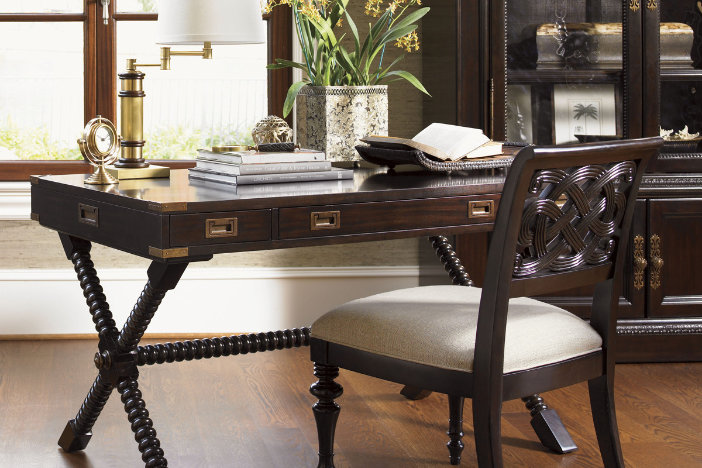
Inspired by the decor prevalent during the colonization of Africa, Asia and the West Indies, British Colonial interiors feature lightweight cotton fabric on drapes, curtains and bedding. The most common color palette includes a mix of whites, beiges and browns to produce a subdued and subtle look. Flowers and plants are consistently used throughout the home to provide a fresh feel.
Furniture is made up of materials like wicker, ebony, teak and mahogany. Leather travel trunks with brass latches and rivets were popular items during the heyday of this era. Tables, chairs, cabinets and sofas are usually constructed with dark-colored wood to create a rich, sophisticated ambiance. The deep-colored furniture provides a lovely contrast to the neutral-toned walls. Bell jar lanterns and lighted ceiling fans are popular fixtures to illuminate British Colonial homes. British Colonial decor has a certain casual elegance that makes it a popular choice of interior designers and decorators.
Carolean
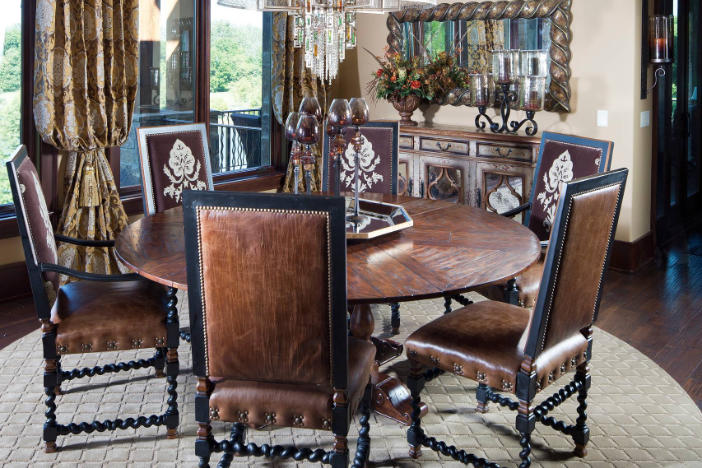
Carolean style, otherwise referred to as restoration style, is similar to Baroque-influenced houses. Brass is the hardware of choice for cabinet pulls, faucets and door knobs. Furniture is delicately carved and features elegant woodwork inspired by floral and fruit motifs as well as baluster-style legs. Walnut is the type of wood most commonly used to construct chairs, tables, cabinets and so forth. A decorative covering of fine wood known as veneer is applied to furniture to add character. Carolean lighting boasts a mix of modern and Old World characteristics thanks to simple silhouettes and detailed finishes. Table lamps feature shades made of silk or velvet, and they’re adorned with tapestries and fringe. This style was en vogue in England during the reign of Charles II.
Chinese

Chinese style borrows motifs from Asian and Zen home design, such as a focus on nature and simplicity. Interiors are filled with bright splashes of gold, red, brown and black. Feng Shui is important, as the arrangement of furniture and decor is said to offer positive energy to the household. Cabinets, armoires and chairs have detailed engravings and paintings of dragons, mountains, clouds, birds and flowers.
Furniture also comes with a thick lacquer finish for a glossy appearance. Initially, this process was incredibly expensive and large fully lacquered furnishings were reserved for only imperial members of the Song dynasty. By the 19th century it had become more affordable, but was typically used on smaller pieces or decorative sections of larger furniture. Mother of pearl was an especially popular inlay material for lacquered Chinese designs. Paper lanterns are hung from the ceiling to contribute color, texture and, of course, light to the home. Ornate pendants and chandeliers can also be found in Chinese interiors.
Chippendale
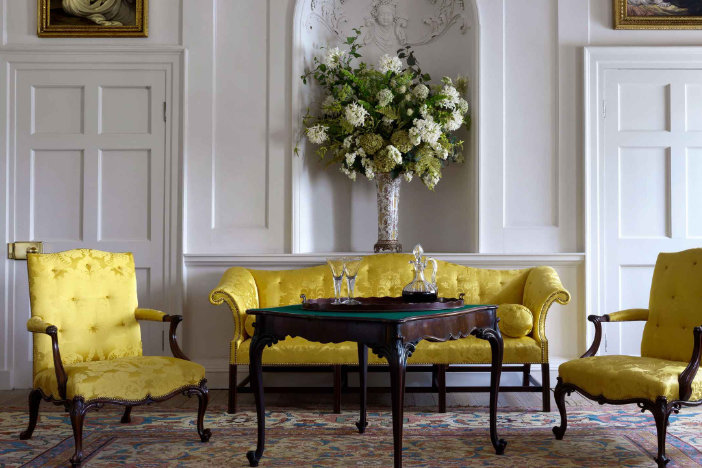
The Chippendale interior design style emerged in 1754 when Thomas Chippendale published the furniture catalog “The Gentleman and Cabinet Maker’s Director.” Chippendale furniture features influences from Gothic and Rococo furnishings and Chinese architectural elements such as roofs and window patterns [Yingquan, Lei & Qi 2013ref]. The back legs of furniture flow upward to form intricately detailed backrests of chairs.
Other characteristics of Chippendale furniture include tapered legs, club feet and lacy patterns. Furnishings are typically made of mahogany, a material which is easily carved and stands up to everyday wear and tear. Stools and chairs are upholstered with fine fabrics like velvet or silk. Chippendale style interiors are filled with neutral tones like browns, creamy whites and grays. Metallics such as gold, silver and bronze are also used throughout the home. Chandeliers are a common light fixture used to create a sense of sophistication.
Coastal
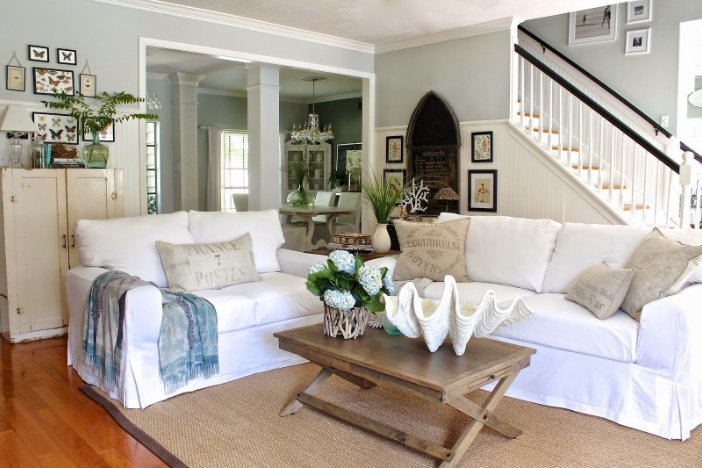
Coastal style gives off a relaxed, subdued and carefree vibe. Beach-inspired elements such as sand dollars, sea glass and driftwood are used as decor throughout the home. A crisp white color palette is common in coastal style, with occasional splashes of blues, greens, aquas and corals. Light is a central element in coastal interior design, therefore, homes feature plenty of glass doors, skylights and windows. Coastal furniture typically comes with a lived-in, by-the-sea feel, so you’ll often see painted wood chairs and tables with a distressed finish or a woven wicker chair. Light fixtures also use natural elements to keep up the beachy ambiance. Chandeliers made up of cascading petals of sea glass or hanging wooden pendants that feature a worn away finish are both appropriate for a coastal home.
Commonwealth
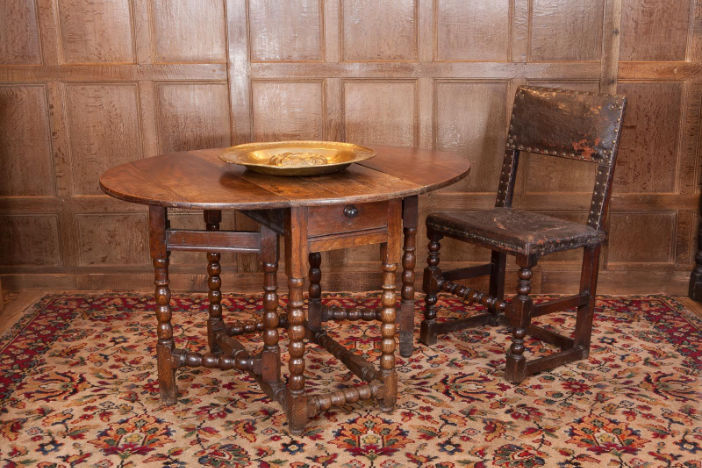
Commonwealth or Cromwellian home design focuses on the basics – furniture comes with severe, straight lines with no intricate carvings or embellishments. This aesthetic shares similar characteristics to Bauhaus style in that it concentrates on function rather than style and decor. Instead of velvet or silk upholstery, leather is used for its sleek and simple feel. The thick strips of cowhide leather were stretched across the uprights and seat rails and fastened by brass head nails. The low backs of seating were never stuffed, as this was considered far too luxurious for this prim and proper English style. Rather, classic open slat chair backs were used for their understated look. The only Light fixtures also feature very basic shapes with little detailing, like smooth geometrically shaped hanging pendants or simple track lighting that blends in with the walls.
Contemporary
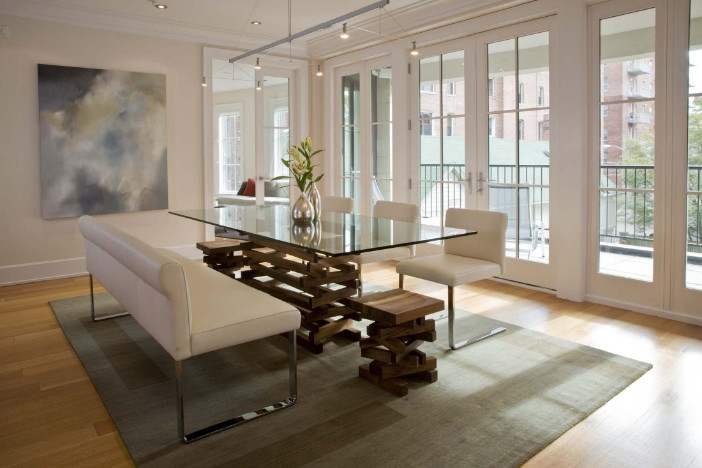
Contemporary style is often interchanged with modern design – however, there are a few differences. Unlike its modern counterpart, contemporary style borrows from various time periods, creating an eclectic environment. For instance, sleek, simple furniture and art can be combined with detailed molding around walls and windows. Contemporary style also takes a note from minimal home design, as layouts are open and airy with no clutter in sight. Furnishings have sharp, 90-degree angles and are upholstered with simple fabrics such as wool, cotton and linen that have no ornamentation or patterns. Instead, sofas, chairs and stools are covered in neutral colors like black, white and tan. No fringe, skirts, trim or tassels can be found on contemporary furniture, as all legs are exposed. Light fixtures are made up of sleek materials like glass, ceramic, polished nickel or stainless steel.
Cool Britannia
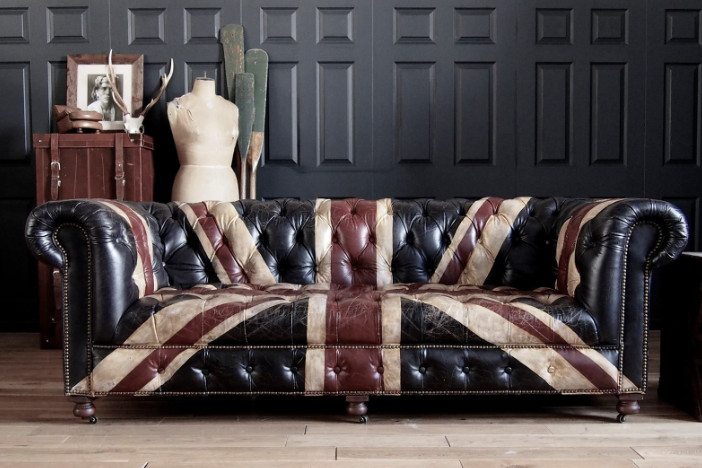
This home-style reflects pride in the United Kingdom, so the British flag (a.k.a. Union Jack) is frequently used as design inspiration. This 1960s pop culture-inspired style was at its height in the 1990s and reinforced by popular bands of the time like Oasis, Elastica and the Spice Girls. Various shades of red, white and blue are often used subtly throughout the home. For instance, a warm brick fireplace, cream-colored walls and blue-toned sofas bring the Cool Britannia color palette to life in a subdued manner.
Quirky accessories and statement art offer a splash of personality to this British-inspired style. Scatter cushions are commonly used as a way to bring color onto neutral-toned furnishings. The pillows could feature bold red, white and blue patterns or solid colors. Leather sofas and chairs are a frequently seen feature in this style home. Vintage accents are also used, such as distressed wood tables and cabinets.
Cottage
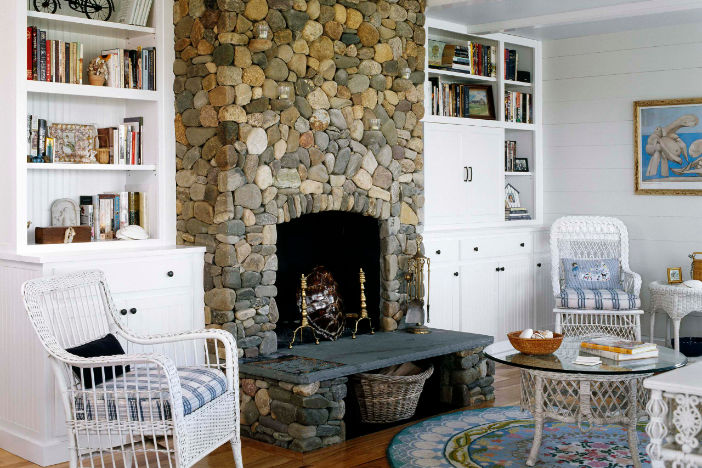
Cottage style can be described as cozy and comforting. Much like coastal design, cottage interiors evoke a light and airy feel. Instead of heavy drapes, lightweight fabrics such as lace and cotton are used. Weathered woods, distressed paints and a color palette of whites and creams come together to create a warm and welcoming informal home. Vintage fixtures and accessories such as chandeliers, farmhouse sinks and ornate rugs are used to produce a charming farmhouse aesthetic. Furnishings are comfortable and casual. Chairs and sofas can be dressed in lively pastel hues that reflect the sea and sky. Woven rugs sit underneath the furniture to keep with the relaxed nature of the home. Beaded board and wood planks add character to walls, ceilings and floors. Natural light is accentuated to illuminate the home, while fixtures such as vintage chandeliers and weathered pendants provide additional light.
Country
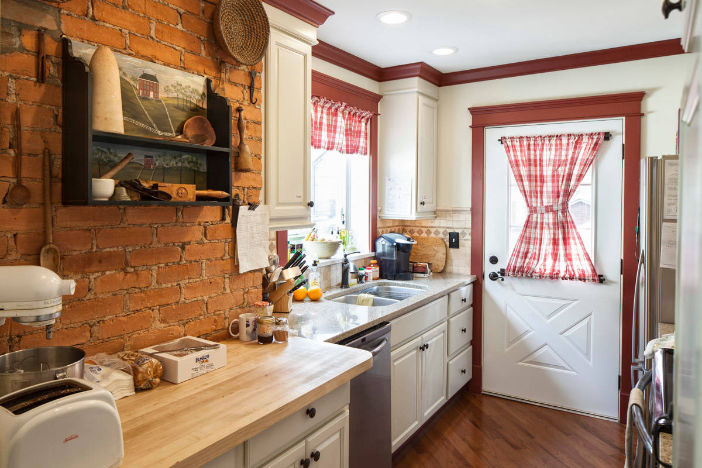
Country home design shares similar characteristics to that of cottage style. It uses muted colors and vintage accessories throughout the home. Flea markets and antique shops offer inspiration for furniture and decor pieces. Fabrics on drapes, curtains and bedding often feature floral patterns, gingham, large checks or stripes to bring personality to the otherwise understated color palette. Furnishings are constructed of warm woods such as pine and oak, and feature clean lines with little ornamentation. Wooden tables, chairs, cabinets and dressers typically have a worn painted finish. Metal accents are brought forth using light fixtures such as bronze wall sconces or copper lanterns. Milk painted mason jars in soft pastel colors are often used as decorative containers on open shelves.
Guide Sections
References
- Droste, M. (2002). Bauhaus, 1919-1933. Taschen.
- Yingquan, Z., Lei, X., & Qi, S. (2013). The Impact of Chinese Architecture on Chippendale Style Chinoiserie Furniture. Furniture & Interior Design, 1(6), 12-17.

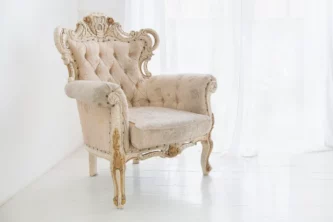
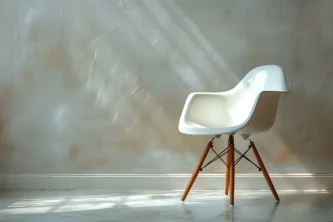
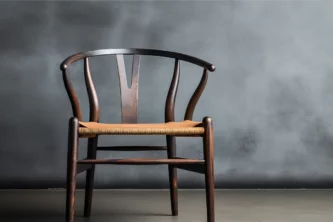
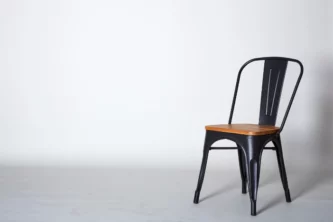
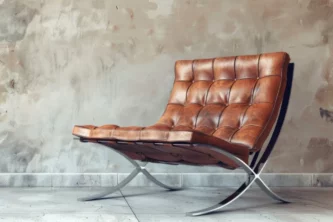
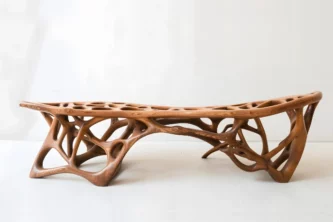
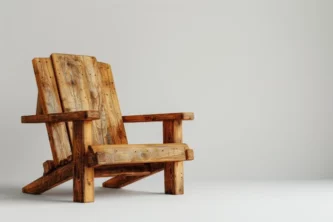
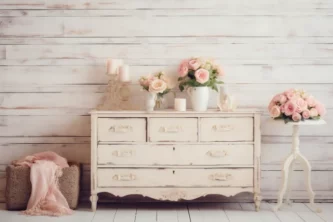
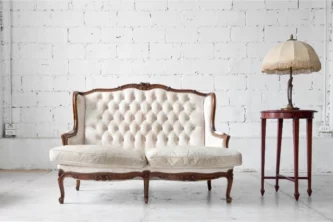




Leave a Reply